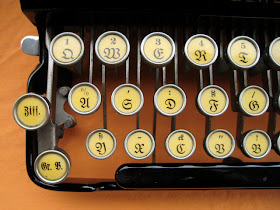National Punctuation Day sort of escaped me yesterday, but I didn't want to
let it go by entirely unnoticed here at Letterology. To put a finer point on it...
visual communication relies on punctuation. It reminds us when to breath,
when to stop, when to pepper our speech with enthusiasm, and when to
question. It behaves as signposts and wayfinders to help us navigate language,
and signal action. Punctuation characters are the supporting cast for all the
other 26 letters of our alphabet. Without them, words fail and language has no
texture.
Learning when and where to apply punctuation is a perennial challenge at
times—certainly for me that is! Then there are the diverse styles of marks—
each with various features, which we seldom see as we are too busy paying
dues to 26 U&lc letters. By comparison, the marks may seem inconsequential,
but enlarge them 800% and you will discover they all have distinct features.
One of the best graphic examples I've seen of this is Heidi Neilson's 2003 book,
diversity of the period. Delightful, and one I always saved to show my type
students in the past.


















































